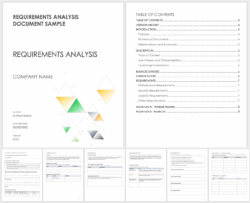Maintaining a safe and healthy workplace isn’t just a legal requirement; it’s a fundamental commitment to your employees’ well-being and the overall success of your organization. Creating a culture where safety is paramount requires continuous effort, open communication, and a clear understanding of what’s working well and what needs improvement. That’s where actively soliciting feedback from your team becomes invaluable.
Imagine having a direct line to your employees’ perspectives on daily hazards, safety procedures, and their comfort levels. A well-designed occupational health and safety survey template provides exactly that. It’s a structured way to gather anonymous insights, identify potential risks before they become incidents, and empower your workforce to contribute actively to a safer environment. This proactive approach not only helps prevent accidents and injuries but also fosters trust and demonstrates your commitment to their welfare.
Why Your Organization Needs an Occupational Health and Safety Survey
Understanding the pulse of your workplace’s safety culture is paramount. Without direct input from the people on the ground, who experience the working conditions daily, you might be missing critical information. An occupational health and safety survey offers a unique lens into the practical application of your safety policies, highlighting areas where training might be insufficient, equipment might be faulty, or communication channels might be unclear. It’s not just about ticking a box for compliance; it’s about genuinely improving conditions and preventing harm.
Think about it: employees often have first-hand knowledge of subtle hazards that management might overlook. They can identify ergonomic issues at their workstations, procedural shortcuts that are silently increasing risk, or areas where emergency protocols aren’t fully understood. A comprehensive survey can uncover these nuances, turning potential liabilities into opportunities for improvement. This feedback loop is essential for building a robust safety management system that evolves with your organization.
Beyond risk identification, such a survey reinforces your organization’s commitment to safety. When employees see that their opinions are actively sought and valued regarding their health and safety, it fosters a sense of psychological safety and engagement. They feel heard, which can significantly boost morale and encourage greater adherence to safety protocols. This positive reinforcement creates a self-sustaining cycle where employees are more invested in maintaining a safe environment for themselves and their colleagues.
Ultimately, investing in regular occupational health and safety surveys is an investment in your people and your future. It reduces the likelihood of costly incidents, minimizes employee turnover due to safety concerns, and strengthens your reputation as a responsible employer. Proactive identification and mitigation of risks through employee feedback are far more effective and less expensive than reacting to an accident after it has occurred.
Key Areas to Cover in Your Survey
- Hazard identification and reporting mechanisms
- Effectiveness of safety training and awareness programs
- Understanding and adherence to personal protective equipment (PPE) policies
- Emergency preparedness and response procedures
- Ergonomic considerations and workstation comfort
- Incident reporting and investigation processes
- Overall safety culture and communication within departments
- Employee well-being and stress management support
Crafting an Effective Occupational Health and Safety Survey Template
Designing an effective occupational health and safety survey template requires careful thought to ensure you gather relevant and actionable data. The goal is to make it easy for employees to provide honest feedback without feeling interrogated or rushed. Start by clearly defining the objectives of your survey. Are you assessing specific training needs, evaluating new equipment, or conducting a general health check of your safety culture? Clear objectives will guide your question design.
When formulating questions, use clear, concise language that avoids jargon. Employ a mix of question types, including multiple-choice, Likert scales (e.g., “strongly agree” to “strongly disagree”), and open-ended questions. Open-ended questions are particularly valuable as they allow employees to elaborate on their experiences and provide qualitative insights that quantitative data might miss. Always emphasize anonymity to encourage candid responses, as employees are more likely to share critical feedback if they feel their identity is protected.
Once the survey is administered, the real work begins: analyzing the results. Look for patterns, recurring themes, and significant deviations from expected responses. Pay close attention to areas where multiple employees express similar concerns. This data should then be used to inform concrete action plans. It’s crucial to communicate the survey results and the actions taken back to the employees. This transparency closes the loop, demonstrating that their input was valued and acted upon, reinforcing trust and participation in future initiatives.
Remember, an occupational health and safety survey is not a one-off event but a tool for continuous improvement. Regularly reviewing and updating your survey template to reflect changes in your workplace, industry standards, and emerging risks will ensure its continued relevance and effectiveness. Treat each survey as an opportunity to learn, adapt, and further strengthen your commitment to a healthy and safe working environment.
- Define clear survey objectives from the outset.
- Ensure questions are clear, concise, and easy to understand.
- Prioritize anonymity to encourage honest and comprehensive feedback.
- Include a mix of quantitative and qualitative (open-ended) questions.
- Plan for thorough data analysis and timely communication of results.
- Develop actionable plans based on the insights gained.
- Establish a regular schedule for conducting follow-up surveys.
Proactively engaging your workforce through well-structured feedback mechanisms like health and safety surveys is a cornerstone of a resilient organization. It transforms potential weaknesses into strengths, ensuring that everyone plays a part in creating a workplace that prioritizes well-being above all else. This ongoing dialogue ensures that safety practices evolve, adapt, and remain relevant to the daily realities faced by your team.
Ultimately, a strong focus on occupational health and safety isn’t just about avoiding penalties or meeting regulations; it’s about fostering a thriving, productive environment where every individual feels secure and valued. By consistently seeking input and demonstrating a commitment to improvement, organizations build a culture of care that benefits everyone, leading to reduced incidents, higher morale, and greater operational efficiency.

